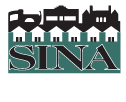SINA and institutions featured as Promising Practice in report on “Hospitals Building Healthier Communities”.
The following is a section from a massive report published March 2013 by the Democracy Collaborative at the University of Maryland titled Hospitals Building Healthier Communities: Embracing the Anchor Mission. In section 3 on “Emerging Hospital Trends and Promising Practices” the report had the following to say about SINA under the heading Multi-Institutional Partnerships, pp. 56-57. The full report can be downloaded at http://community-wealth.org/content/hospitals-building-healthier-communities-embracing-anchor-mission.
MULTI-INSTITUTION PARTNERSHIPS
Health systems do not have to act unilaterally in their community work. I n many cases, as evidenced by examples in this section of the report, they should partner with other anchor institutions, philanthropic organizations, community nonprofits, and local government to maximize their impact. A “critical mass” of support with a place-based focus, which includes targeting resources and institutional leadership along with community buy-in and participation, is key to creating the necessary momentum to revitalize impacted communities.
The Southside Institutions Neighborhood Alliance (SINA) in Hartford, Connecticut is an early example of a multi-institution partnership—and is now considered a national model for neighborhood revitalization. Hartford Hospital, along with The Institute of Living and Trinity College, formed SINA in 1976 and initially focused on working with community organizations on local issues and helping found a weekly community newspaper that is still published today. The alliance’s early work was instrumental in changing the institution’s perception within the community and helped lay the groundwork for a positive working relationship for future community and economic development projects. SINA strongly emphasizes its commitment to “working with its neighbors and not imposing its own agenda” (emphasis not added).164
Throughout the 1980s and early 1990s, SINA had an active role in a variety of neighborhood revitalization projects, including operating an employee mortgage assistance program and assisting in several housing and commercial projects. By the late 1990s, Connecticut Children’s Medical and Connecticut Public Television and Radio expanded SINA’s membership to five. D espite the new members and earlier projects, a weak economy had reversed many of the neighborhood gains; as a consequence, SINA developed a comprehensive strategic plan in 1996 that built off of its community standing and deployed its financial resources to have “an immediate and dramatic physical impact.”165
At the core of SINA’s Neighborhood Initiative was the development of a 16-acre educational campus called The Learning Corridor, in partnership with state and local agencies, on top of a former bus depot that was considered among the most blighted and environmentally contaminated properties in the city. To fund the four public magnet schools, the anchors provided $10 million in early capital, which helped leverage an additional $102 million. Hartford Hospital “has been a key player” in construction oversight, financial planning, and on-going facilities management of the site.166
Another key component of the Neighborhood Initiative was a housing program called Cityscape Homes, which sought to address the persistent problem of weak housing demand. Utilizing a “target block” approach focused first on the areas with the most blighted properties, SINA, in partnership with two local nonprofit housing organizations, maximized its economic impact, creating enough housing demand for a wait list today and providing affordable housing options for local residents. To date, SINA has helped construct or rehabilitate at least 55 affordable homes and 74 rental units. Other Neighborhood Initiative projects include the revitalization of Park Street—the neighborhood’s and city’s busiest retail corridor—and the establishment of a neighborhood Job Center, which has served more than 3,000 people.167
ENDNOTES:
164. Southside Institutions Neighborhood Alliance, History, Hartford, CT: SINA, 2012, https://sinainc.org/history/, accessed Sept 4, 2012.
165. Southside Institutions Neighborhood Alliance, History, Hartford, CT: SINA, 2012, https://sinainc.org/history/, accessed Sept 4, 2012.
166. Southside Institutions Neighborhood Alliance, About Us, Hartford, CT: SINA, 2012, https://sinainc.org/about-us/, accessed Sept 4, 2012.
167. Southside Institutions Neighborhood Alliance, About Us, Hartford, CT: SINA, 2012, https://sinainc.org/about-us/, accessed Sept 4, 2012. Southside Institutions Neighborhood Alliance, SINA reports, Hartford, CT: SINA, Winter 2007, 2. Office of State Treasurer, Connecticut Housing Trust Fund for Growth and Opportunity, Hartford, CT: Office of State Treasurer, 2006, http://www.state.ct.us/ott/abouthousingtrustfund.htm, accessed Sept 4, 2012. Southside Institutions Neighborhood Alliance, SINA reports, Hartford, CT: SINA, Summer 2010, 1. Trinity College, History of Trinity College in the Community, Hartford, CT: Trinity College, Nov 2009, 1.
